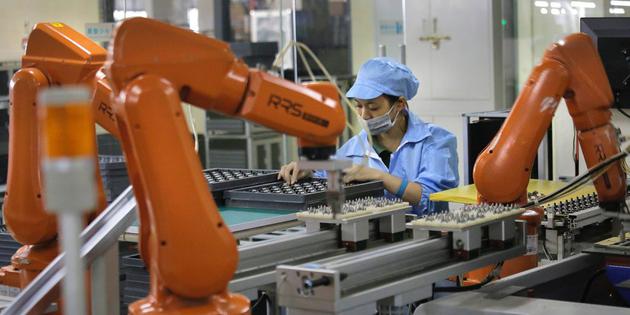 4828
4828
 2017-01-04
2017-01-04
FULLY AUTOMATED FACTORIES
The Taiwanese company that manufactures Apple’s iPhone has announced a three-part plan to fully automate its factories, with hopes to achieve 30% automation by 2020. The move could put as many as a million people out of work, another example of automation's major implications for the global workforce.
In an article published in Digitimes, General Manager Dai Jia-peng of Foxconn’s Automation Technology Development Committee explains that the process will unfold in three phases.
“In the first phase, Foxconn aims to set up individual automated work stations for work that workers are unwilling to do or is dangerous,” Dai said. This will be followed by the second phase, which focuses on streamlining production efficiency and removing unnecessary robots from the production line. “In the third phase, entire factories will be automated with only a minimal number of workers assigned for production, logistics, testing, and inspection processes,” concluded Dai.
Back in 2015, Foxconn began its efforts toward automation, stating that they wanted to achieve 30 percent automation by 2020. Right now, the manufacturing giant has already deployed over 40,000 of its Foxbots, the industrial robots it has developed in-house. Foxconn has the capability to produce 10,000 Foxbots annually, which could be used to replace human labor.

THE REALITY OF AN AUTOMATED FUTURE
As businesses strive toward increased efficiency, automation has emerged as a valuable tool in helping them achieve their goals. While perhaps beneficial to the companies, this will ultimately lead to job loss for many employees. Foxconn, for instance, employed around 1.2 million people as of last year — if they reach their goal of full automation, that’s over a million people who will lose their jobs to Foxbots.
While robots may be a more cost-effective option in the longterm, a company must be ready to shell out a sizable initial investment to begin the transition to automation, and while robotic technology continues to improve, bots aren’t likely to put everyone out of work. As Dai noted, “Industrial robots will not be able to completely replace workers because humans have the flexibility to quickly switch from one task to another.” Reprograming a robot to perform multiple tasks or even a single new one is just too time-consuming and expensive.
Source:futurism